Find The Best New Roof Installation Contractors With Roofyng.com
Get A Durable & Reliable New Roof Installed The Easy Way
Discover Other Roofing Services
Professional Roofing Services
Find trusted roofing companies near you. Get multiple quotes for roof installation, repair, and replacement services.
Roofing Repair
Comprehensive roof repair services for all types of roofs. We fix leaks, damage, and other roofing issues to keep your property protected.
Roof Replacement Services
Complete roof replacement services for residential and commercial buildings. We remove your old roof and install a new roof with the material of your choice.
Factory Roofing Services
Specialized roofing services for commercial buildings. We handle installation, repair, and replacement for all types of commercial roofs.
Asphalt Shingle Roofing Contractors
Expert shingle roofers for your home. We specialize in asphalt shingle installation, repair, and replacement, offering a range of shingle types and colors.
After Hours Roof Repair
24/7 emergency roof repair services for urgent situations. We respond quickly to storm damage, leaks, and other roofing emergencies to protect your property.
Repair Roof Leak
Fast and reliable roof leak repair services. We identify and fix the source of leaks to protect your property from water damage.
Tile Roofing
Expert tile roofing services for your home. We specialize in the installation, repair, and replacement of tile roofs, offering a variety of styles and colors.
Steel Roofing Specialists
Durable and stylish steel roof installation services. We offer a variety of metal roofing options, including standing seam and corrugated metal.
Broken Shingle Repair
Expert shingle roof repair services for your home. We fix leaks, damaged or missing shingles, and other common shingle roofing problems.
Shingle Roof Replacement Cost
Affordable and efficient shingle roof replacement services. We remove your old shingles and install a new, durable asphalt shingle roof.
Modified Bitumen Roofing (MBR) Contractors
Expert flat roof installation and repair services. We work with a variety of flat roofing systems, including TPO, EPDM, and modified bitumen.
Eco-Friendly Roofing
Sustainable and eco-friendly green roof installation and maintenance. We create beautiful living roofs that benefit the environment and your property.
Hail Damage Roof Repair
Specialized roofing companies experienced in hail damage repair and replacement. We work with insurance companies to get your roof restored after a hailstorm.
Emergency Metal Roof Repair
Professional metal roof repair services for residential and commercial properties. We fix leaks, dents, rust, and other metal roof issues.
Roof Inspection
Certified roof inspectors provide thorough roof inspections for insurance claims, pre-purchase evaluations, and maintenance assessments.
Metal Roofing Replacement Services
Long-lasting and energy-efficient metal roof replacement services. We install durable steel or metal roofs that enhance your property's value and curb appeal.
Roof Flashing Repair
Professional roof flashing repair to prevent leaks and water damage. We repair and seal flashing around chimneys, skylights, vents, and other roof penetrations.
Roof Waterproofing Contractors
Professional roof waterproofing services to protect your property from leaks and water damage. We apply high-quality sealants, membranes, and coatings to ensure
Flat Roof Rubber Membrane Installers
Durable and long-lasting rubber roof (EPDM) installation and repair services. Ideal for flat or low-slope roofs on residential and commercial buildings.
TPO Roofing Company
Expert TPO roofing services for flat and low-slope roofs. We offer high-quality TPO roof installation, repair, and maintenance for residential and commercial pro
Tile Roof Maintenance and Repair
Specialized tile roof repair services. We fix leaks, replace cracked or broken tiles, and provide other tile roof maintenance to keep your roof in excellent cond
Industrial Roof Repair
Specialized roofing contractors for industrial facilities. We handle large-scale roof installations, repairs, and replacements for factories, warehouses, and oth
Tile Roofing Replacement Services
Beautiful and durable tile roof replacement services. We install high-quality clay or concrete tile roofs, offering a classic and elegant look for your home.
Flat Roof Replacement
Reliable flat roof replacement services for residential and commercial properties. We specialize in installing durable and weather-resistant flat roofing systems
Temporary Roof Cover
24/7 emergency roof tarping services to protect your property from further damage. We provide temporary roof covers after storms or other incidents.
Chimney Crown Repair
Expert chimney flashing repair services to prevent leaks and water damage. We ensure your chimney is properly sealed to protect your home.
Roof Insulation Company
Improve your home's energy efficiency and comfort with our roof insulation services. We install and replace attic insulation to reduce energy costs and keep your
Cedar Shake Roof Maintenance
Beautiful and durable cedar shake roofing services. We specialize in cedar shake installation, repair, and replacement, providing a classic and elegant look for
Find the Right New Roof Installation Contractor With Roofyng.com

- Tell Us About Your Project
- Describe your new roof installation project, including the size of your roof, the type of roofing material you prefer, and any specific requirements you have.
- We Connect You With Local Contractors
- We'll match you with reputable new roof installation contractors who service your area and have experience installing the type of roof you need.
- Compare Quotes & Choose The Best Fit
- Review quotes, compare services, and choose the new roof installation contractor who best meets your needs and budget. We provide you with contractor profiles, ratings, and reviews to help you make an informed decision.
- Get Your Project Started!
- With the right new roof installation contractor on board, you're ready to get your roofing project started and enjoy a beautiful, durable roof.
Why Choose Roofyng.com for Your New Roof Installation?
The smarter way to find New Roof Installation contractors

- Vetted & Trusted Contractors
- We rigorously vet all new roof installation contractors in our directory to ensure they meet our standards for quality, reliability, and customer satisfaction.
- Get Competitive Quotes
- Compare prices from multiple new roof installation contractors and find the best deal without compromising on quality.
- Save Time & Effort
- Finding the right new roof installation contractor can be time-consuming. Let us do the work for you! Our directory connects you with trusted contractors quickly and easily.
- Wide Range of Options
- We have contractors who offer a variety of roofing materials and styles, ensuring you find the perfect new roof for your home or business.
- Expert Advice Available
- Many contractor profiles offer insights into their expertise, experience, and the specific types of new roof installations they specialize in. Get informed and choose the best contractor for your project.
- Free & Easy To Use
- Roofyng.com is completely free for homeowners and businesses to use. Get started finding your new roof installation contractor today!
Need a New Roof for Your Business?
Find Commercial New Roof Installation Contractors
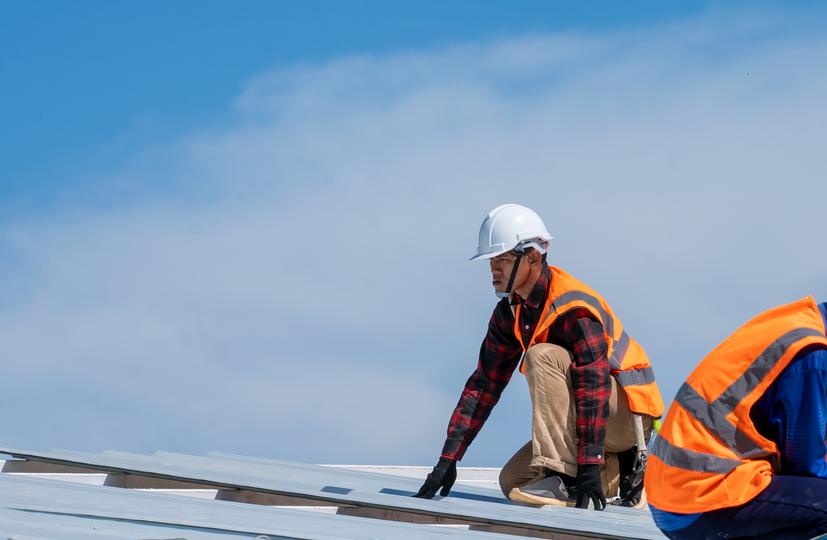
Roofing Contractors
Find trusted roofing companies near you. Get multiple quotes for roof installation, repair, and replacement services.
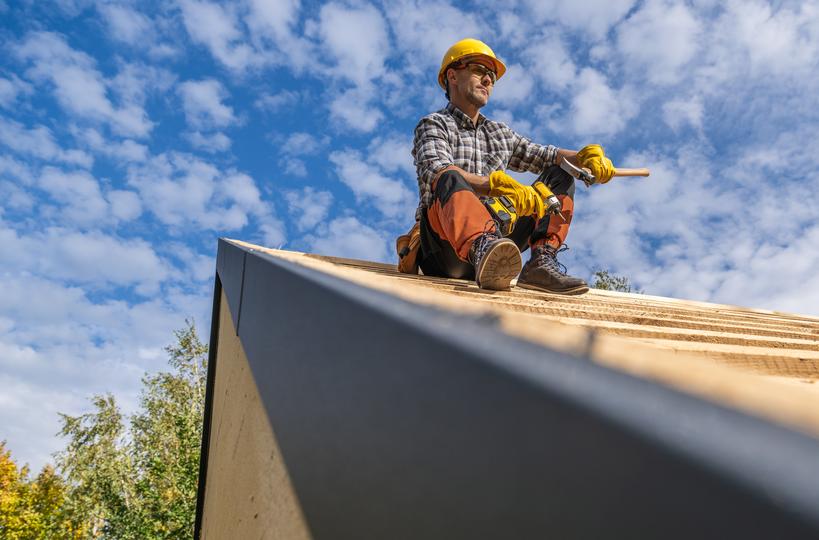
Roof Installation Contractors
Get a new roof installed by experienced professionals. We offer a variety of roofing materials and styles to suit your needs and budget.
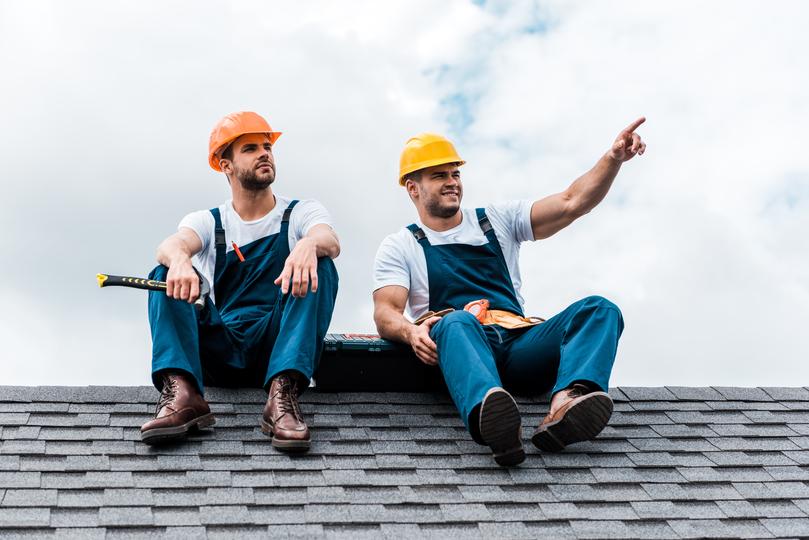
Roofing Repair
Comprehensive roof repair services for all types of roofs. We fix leaks, damage, and other roofing issues to keep your property protected.

Roof Replacement Companies
Complete roof replacement services for residential and commercial buildings. We remove your old roof and install a new roof with the material of your choice.
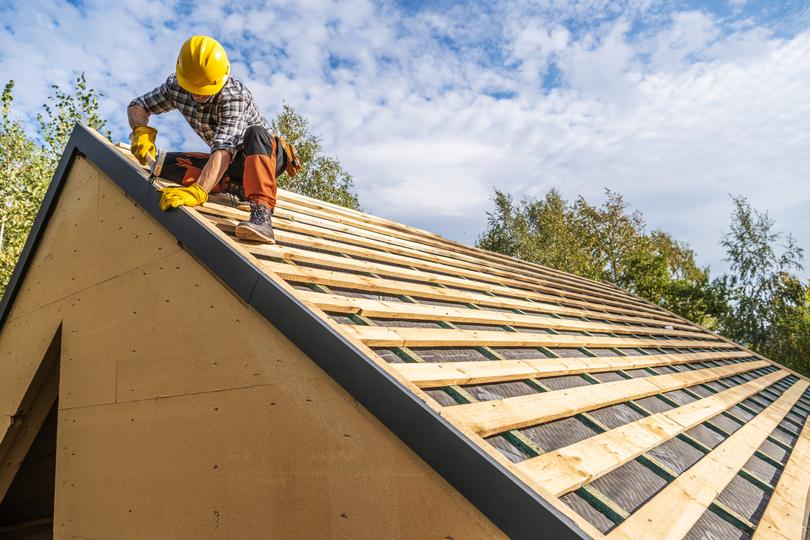
Office Building Roofers
Specialized roofing services for commercial buildings. We handle installation, repair, and replacement for all types of commercial roofs.

Roofing Emergencies
24/7 emergency roof repair services for urgent situations. We respond quickly to storm damage, leaks, and other roofing emergencies to protect your property.
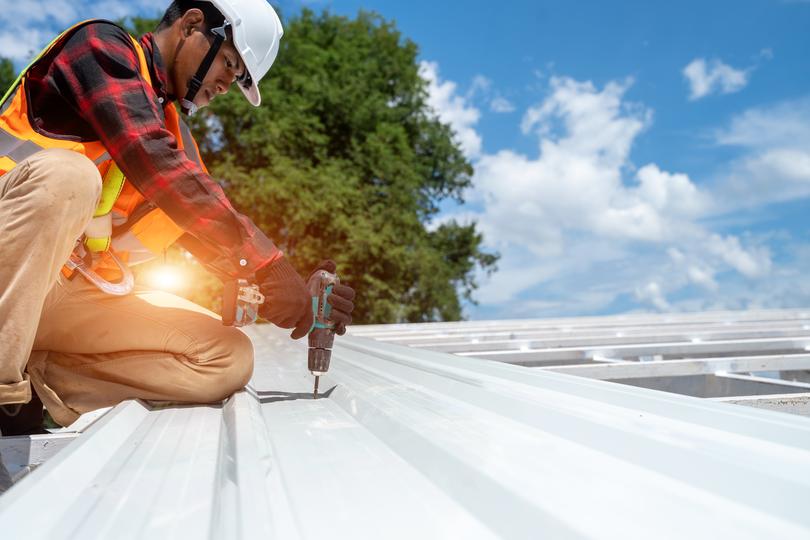
Affordable Roof Leak Repair
Fast and reliable roof leak repair services. We identify and fix the source of leaks to protect your property from water damage.
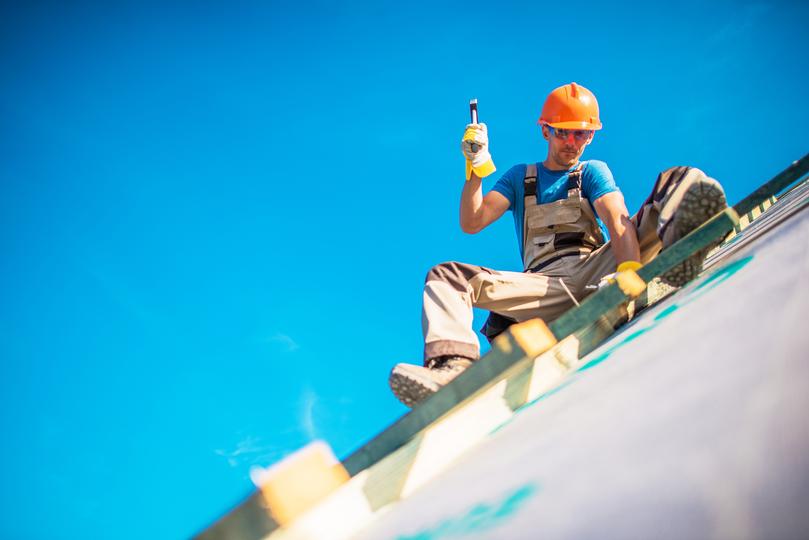
Metal Roofing Companies
Durable and stylish steel roof installation services. We offer a variety of metal roofing options, including standing seam and corrugated metal.

Flat Roof Repair
Expert flat roof installation and repair services. We work with a variety of flat roofing systems, including TPO, EPDM, and modified bitumen.

Vegetated Roof Installers
Sustainable and eco-friendly green roof installation and maintenance. We create beautiful living roofs that benefit the environment and your property.

Hail Damage Roof Restoration
Specialized roofing companies experienced in hail damage repair and replacement. We work with insurance companies to get your roof restored after a hailstorm.
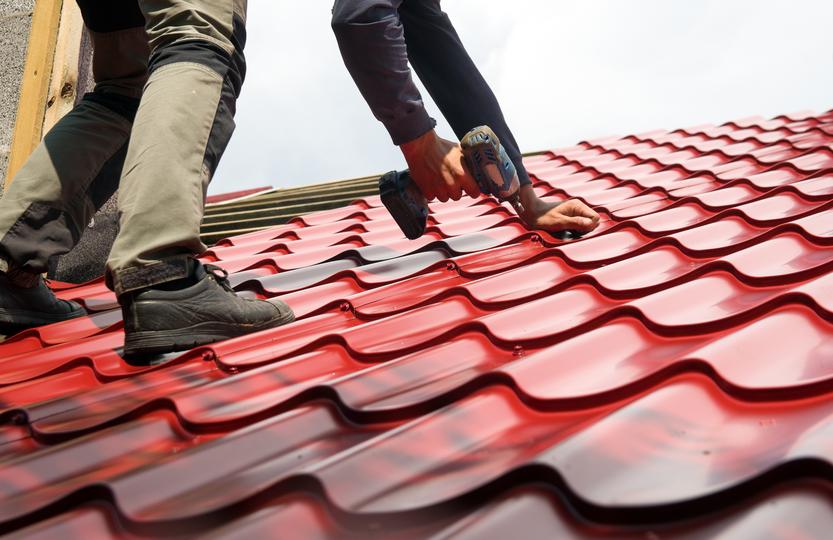
Metal Roof Seam Repair
Professional metal roof repair services for residential and commercial properties. We fix leaks, dents, rust, and other metal roof issues.
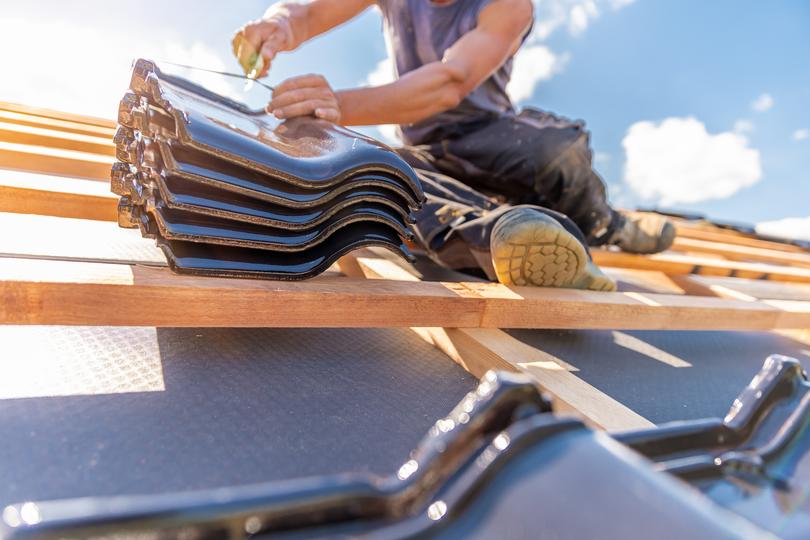
Roof Inspection
Certified roof inspectors provide thorough roof inspections for insurance claims, pre-purchase evaluations, and maintenance assessments.

Metal Roof Replacement Contractors
Long-lasting and energy-efficient metal roof replacement services. We install durable steel or metal roofs that enhance your property's value and curb appeal.

Leaky Flashing Repair
Professional roof flashing repair to prevent leaks and water damage. We repair and seal flashing around chimneys, skylights, vents, and other roof penetrations.

Prevent Water Damage with Roof Waterproofing
Professional roof waterproofing services to protect your property from leaks and water damage. We apply high-quality sealants, membranes, and coatings to ensure

Rubber Roof Installers
Durable and long-lasting rubber roof (EPDM) installation and repair services. Ideal for flat or low-slope roofs on residential and commercial buildings.

TPO Roofing
Expert TPO roofing services for flat and low-slope roofs. We offer high-quality TPO roof installation, repair, and maintenance for residential and commercial pro
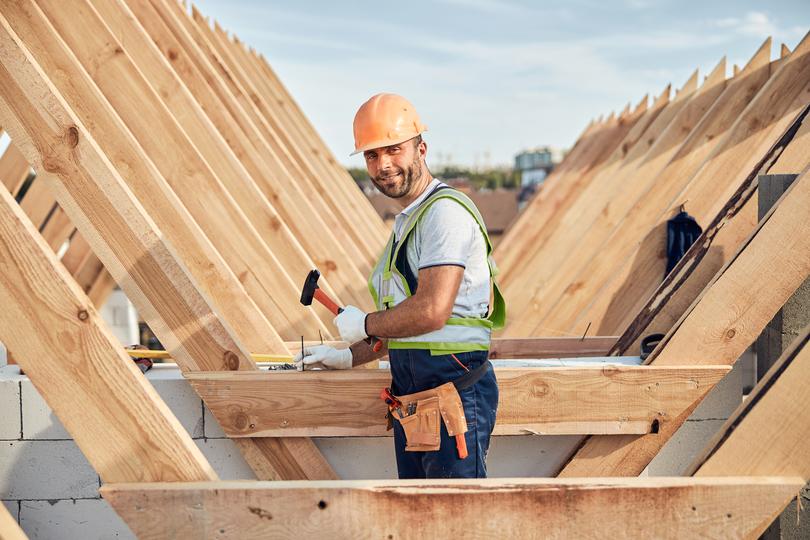
Industrial Roof Repair
Specialized roofing contractors for industrial facilities. We handle large-scale roof installations, repairs, and replacements for factories, warehouses, and oth

Flat Roof Replacement Companies
Reliable flat roof replacement services for residential and commercial properties. We specialize in installing durable and weather-resistant flat roofing systems

Hail Damage Roof Tarping
24/7 emergency roof tarping services to protect your property from further damage. We provide temporary roof covers after storms or other incidents.

Attic Insulation Company
Improve your home's energy efficiency and comfort with our roof insulation services. We install and replace attic insulation to reduce energy costs and keep your
New Roof for Your Home?
Find Residential New Roof Installation Contractors

Roofing Businesses
Find trusted roofing companies near you. Get multiple quotes for roof installation, repair, and replacement services.

Roof Installation Cost
Get a new roof installed by experienced professionals. We offer a variety of roofing materials and styles to suit your needs and budget.

Fix Roof
Comprehensive roof repair services for all types of roofs. We fix leaks, damage, and other roofing issues to keep your property protected.

Reroofing
Complete roof replacement services for residential and commercial buildings. We remove your old roof and install a new roof with the material of your choice.
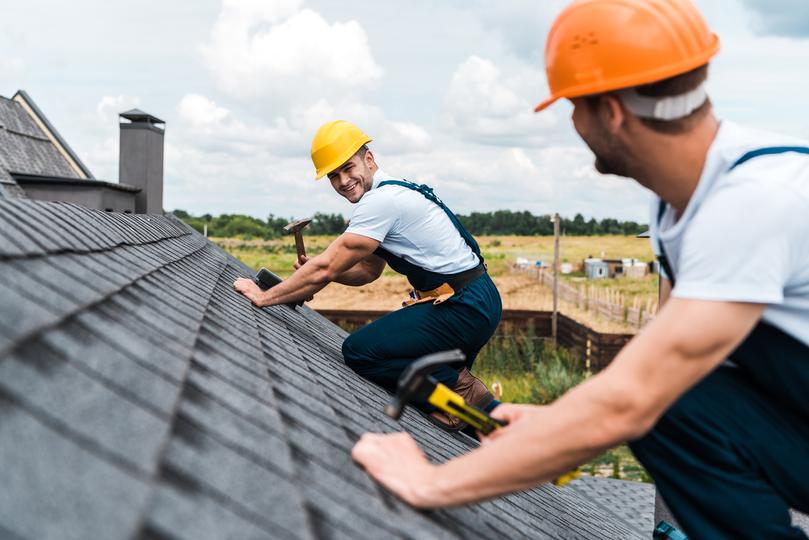
Shingle Roof Maintenance
Expert shingle roofers for your home. We specialize in asphalt shingle installation, repair, and replacement, offering a range of shingle types and colors.

Roofing Emergencies
24/7 emergency roof repair services for urgent situations. We respond quickly to storm damage, leaks, and other roofing emergencies to protect your property.

Roof Leak Specialists
Fast and reliable roof leak repair services. We identify and fix the source of leaks to protect your property from water damage.

Tile Roofers
Expert tile roofing services for your home. We specialize in the installation, repair, and replacement of tile roofs, offering a variety of styles and colors.

Metal Roof Replacement
Durable and stylish steel roof installation services. We offer a variety of metal roofing options, including standing seam and corrugated metal.
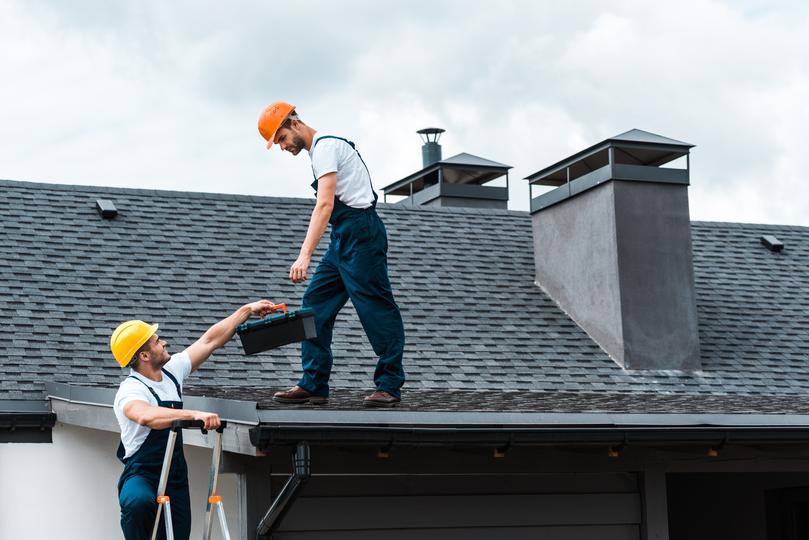
Shingle Roof Repair Near Me
Expert shingle roof repair services for your home. We fix leaks, damaged or missing shingles, and other common shingle roofing problems.

Shingle Roof Replacement
Affordable and efficient shingle roof replacement services. We remove your old shingles and install a new, durable asphalt shingle roof.

Flat Roof Installers
Expert flat roof installation and repair services. We work with a variety of flat roofing systems, including TPO, EPDM, and modified bitumen.

Green Roof Maintenance
Sustainable and eco-friendly green roof installation and maintenance. We create beautiful living roofs that benefit the environment and your property.

Hail Damage Roof Replacement
Specialized roofing companies experienced in hail damage repair and replacement. We work with insurance companies to get your roof restored after a hailstorm.

Metal Roof Repair
Professional metal roof repair services for residential and commercial properties. We fix leaks, dents, rust, and other metal roof issues.

Home Roof Inspection
Certified roof inspectors provide thorough roof inspections for insurance claims, pre-purchase evaluations, and maintenance assessments.

Metal Roof Replacement
Long-lasting and energy-efficient metal roof replacement services. We install durable steel or metal roofs that enhance your property's value and curb appeal.

Roof Flashing Repair
Professional roof flashing repair to prevent leaks and water damage. We repair and seal flashing around chimneys, skylights, vents, and other roof penetrations.

Roof Leak Prevention
Professional roof waterproofing services to protect your property from leaks and water damage. We apply high-quality sealants, membranes, and coatings to ensure

EPDM Roof Repair
Durable and long-lasting rubber roof (EPDM) installation and repair services. Ideal for flat or low-slope roofs on residential and commercial buildings.

TPO Roofing Contractor
Expert TPO roofing services for flat and low-slope roofs. We offer high-quality TPO roof installation, repair, and maintenance for residential and commercial pro

Repair Tile Roof
Specialized tile roof repair services. We fix leaks, replace cracked or broken tiles, and provide other tile roof maintenance to keep your roof in excellent cond

Tile Roof Replacement
Beautiful and durable tile roof replacement services. We install high-quality clay or concrete tile roofs, offering a classic and elegant look for your home.

Upgrade Flat Roof Membrane
Reliable flat roof replacement services for residential and commercial properties. We specialize in installing durable and weather-resistant flat roofing systems

24/7 Roof Tarping
24/7 emergency roof tarping services to protect your property from further damage. We provide temporary roof covers after storms or other incidents.

Chimney Flashing Repair Near Me
Expert chimney flashing repair services to prevent leaks and water damage. We ensure your chimney is properly sealed to protect your home.

Attic Insulation Contractors
Improve your home's energy efficiency and comfort with our roof insulation services. We install and replace attic insulation to reduce energy costs and keep your
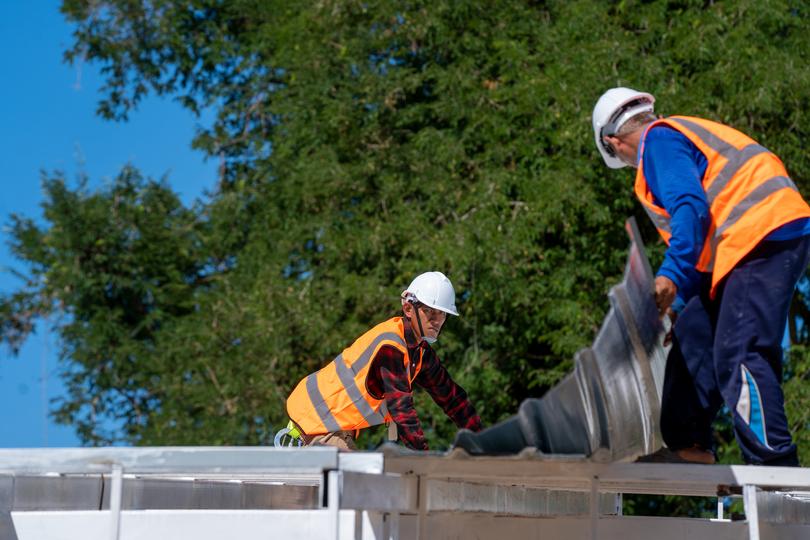
Cedar Shake Roof Repair
Beautiful and durable cedar shake roofing services. We specialize in cedar shake installation, repair, and replacement, providing a classic and elegant look for
Ready to Get Your New Roof Installation Project Started?
Find The Best New Roof Installation Contractors on Roofyng.co.uk!
New Roof Installation Glossary
Roof Deck
Underlayment
Roofing Shingles
Ridge Vent
Soffit Vents
Flashing
Ice & Water Shield
Drip Edge
Gutter
Downspout
Roof Pitch
Roof Valley
Roof Ridge
Square
Roofing Permit
New Roof Installation FAQs
How much does a new roof cost in the UK?
- Roof size and complexity
- Roofing material (asphalt shingles, metal, tile, etc.)
- Labor costs in your area
- Existing roof removal
- Additional features (skylights, chimneys, etc.)
How long does it take to install a new roof?
What are the different types of roofing materials?
- Asphalt Shingles: Affordable, widely available, come in various styles and colors.
- Metal Roofing: Durable, long-lasting, energy-efficient, comes in panels, shingles, or tiles.
- Tile Roofing: Clay, concrete, or slate; known for longevity, durability, and aesthetic appeal.
- Flat Roofing: EPDM rubber, TPO, PVC, built-up roofing (BUR), or modified bitumen.
How do I choose the right roofing material for my new roof?
- Budget: Set a budget and consider the cost of materials and installation.
- Style: Choose a material that complements your home's architectural style.
- Climate: Select a material that performs well in your local climate (e.g., impact-resistant shingles for hail-prone areas, heat-reflective materials for hot climates).
- Durability and Lifespan: Evaluate the expected lifespan and maintenance requirements of different materials.
- Energy Efficiency: Opt for materials with good insulation and reflectivity properties to improve energy efficiency.
How do I find a reputable roofing contractor for a new roof installation?
- Check Online Reviews: Look for positive reviews and ratings from reputable sources.
- Ask for Recommendations: Get referrals from friends, family, or neighbors.
- Verify Licensing and Insurance: Ensure they are licensed and carry appropriate insurance coverage.
- Get Multiple Quotes: Compare estimates from several contractors, considering price, scope of work, and materials.
- Check for Warranties: Inquire about both manufacturer warranties on materials and workmanship warranties from the contractor.
What is the process for a new roof installation?
- Inspection and Measurement: The contractor will inspect your existing roof, take measurements, and assess any structural issues.
- Permitting (if required): The contractor will obtain necessary permits from your local building department.
- Material Delivery: Roofing materials are delivered to your property.
- Protection and Preparation: The contractor will protect your property (landscaping, driveway, etc.) and prepare the roof deck.
- Old Roof Removal (if applicable): If replacing an existing roof, the old roofing materials will be removed and disposed of properly.
- Installation of Underlayment: A waterproof barrier is installed on the roof deck to protect against leaks.
- Installation of New Roofing Material: The new roofing material (shingles, tiles, metal panels, etc.) is installed, ensuring proper alignment, nailing, and flashing.
- Installation of Flashing and Vents: Flashing is installed around chimneys, vents, skylights, and valleys to prevent leaks, and proper ventilation is ensured.
- Gutter Installation or Replacement (if needed): New gutters or downspouts might be installed or the existing ones repaired or replaced.
- Cleanup and Final Inspection: The contractor will clean up debris and conduct a final inspection to ensure proper installation.
What should I do to prepare my home for a new roof installation?
- Clear the Area: Remove vehicles, patio furniture, and any other items from around your house, especially near the roofline.
- Protect Landscaping: Cover plants, shrubs, and other landscaping elements with tarps or drop cloths to prevent damage from falling debris.
- Clear the Attic: If possible, remove or cover belongings stored in your attic.
- Remove Wall Decorations: Take down pictures, mirrors, and other items hanging on walls near the roof to prevent them from falling due to vibrations during the installation process.
- Notify Neighbors: Inform your neighbors about the project's timeline and potential noise or disruption, especially if the work will be happening early in the morning or late in the day.
- Coordinate with the Contractor: Discuss access to your property, parking arrangements, and any specific concerns or instructions you have before the project starts.
What is the best time of year to get a new roof?
What is the difference between a roof warranty and a manufacturer's warranty?
Manufacturer's Warranty: Covers defects in roofing materials. Duration varies depending on the product and manufacturer, ranging from a few years to a lifetime.
Roof Warranty: Provided by the contractor and covers their workmanship. Usually for a shorter duration, typically 1 to 10 years, and protects against installation errors.
Ensure you receive both types of warranties in writing.
What are the signs that a new roof was installed incorrectly?
- Leaks: Recurring leaks shortly after installation.
- Misaligned Shingles: Shingles that are uneven, crooked, or have gaps.
- Visible Nails or Fasteners: Exposed nails or fasteners that are not properly sealed.
- Improper Flashing: Flashing that is loose, damaged, or installed incorrectly.
- Inadequate Ventilation: Signs of poor ventilation, such as excessive heat or moisture in the attic.
Do I need a permit to install a new roof?
What is a roof square?
What is roof pitch, and why is it important?
- Water Drainage: Steeper pitches shed water more efficiently, while lower pitches require more careful waterproofing considerations.
- Material Choice: Some roofing materials are better suited for certain pitches.
- Aesthetics: Pitch contributes to a building's overall architectural style.
- Structural Support: The pitch affects the load-bearing capacity of the roof structure.
What is a roof valley, and why is it a common leak area?
- Water Concentration: Valleys channel a significant volume of water runoff.
- Flashing Complexity: Flashing in valleys requires precise installation for a watertight seal.
- Debris Buildup: Leaves and debris can accumulate in valleys, trapping moisture and leading to deterioration.
What is the purpose of roof underlayment?
What is the purpose of roof flashing?
- Chimneys
- Vents
- Skylights
- Walls
- Valleys
- Other areas where the roof changes plane or intersects with a vertical surface
What is a roof ridge?
What is a roof rake, and why is it important?
- Excessive weight on the roof, which can lead to structural damage.
- Ice dams, which can cause leaks and water damage.
How do I know if my roof ventilation is adequate?
- Excessive heat in the attic during summer.
- Moisture or frost buildup in the attic during winter.
- Premature shingle deterioration.
- Higher than usual energy bills.
What is a roofing square?
What is the difference between a roofer and a roof inspector?
Roofer: A skilled tradesperson who performs the hands-on work of installing, repairing, or replacing roofs.
Roof Inspector: A qualified professional who assesses the roof's condition and provides a detailed report of their findings, without doing repairs.
What is ice and water shield?
What is a drip edge?
- Direct water runoff into the gutters, preventing it from dripping onto the fascia and causing damage.
- Prevent wind-driven rain from getting under the shingles.
- Improve the aesthetic appearance of the roof's edges.
What is a roofing permit, and do I need one?
How much does a new roof cost in the UK?
- Roof size and complexity
- Roofing material (asphalt shingles, metal, tile, etc.)
- Labor costs in your area
- Existing roof removal
- Additional features (skylights, chimneys, etc.)
How long does it take to install a new roof?
What are the different types of roofing materials?
- Asphalt Shingles: Affordable, widely available, come in various styles and colors.
- Metal Roofing: Durable, long-lasting, energy-efficient, comes in panels, shingles, or tiles.
- Tile Roofing: Clay, concrete, or slate; known for longevity, durability, and aesthetic appeal.
- Flat Roofing: EPDM rubber, TPO, PVC, built-up roofing (BUR), or modified bitumen.
How do I choose the right roofing material for my new roof?
- Budget: Set a budget and consider the cost of materials and installation.
- Style: Choose a material that complements your home's architectural style.
- Climate: Select a material that performs well in your local climate (e.g., impact-resistant shingles for hail-prone areas, heat-reflective materials for hot climates).
- Durability and Lifespan: Evaluate the expected lifespan and maintenance requirements of different materials.
- Energy Efficiency: Opt for materials with good insulation and reflectivity properties to improve energy efficiency.
How do I find a reputable roofing contractor for a new roof installation?
- Check Online Reviews: Look for positive reviews and ratings from reputable sources.
- Ask for Recommendations: Get referrals from friends, family, or neighbors.
- Verify Licensing and Insurance: Ensure they are licensed and carry appropriate insurance coverage.
- Get Multiple Quotes: Compare estimates from several contractors, considering price, scope of work, and materials.
- Check for Warranties: Inquire about both manufacturer warranties on materials and workmanship warranties from the contractor.
What is the process for a new roof installation?
- Inspection and Measurement: The contractor will inspect your existing roof, take measurements, and assess any structural issues.
- Permitting (if required): The contractor will obtain necessary permits from your local building department.
- Material Delivery: Roofing materials are delivered to your property.
- Protection and Preparation: The contractor will protect your property (landscaping, driveway, etc.) and prepare the roof deck.
- Old Roof Removal (if applicable): If replacing an existing roof, the old roofing materials will be removed and disposed of properly.
- Installation of Underlayment: A waterproof barrier is installed on the roof deck to protect against leaks.
- Installation of New Roofing Material: The new roofing material (shingles, tiles, metal panels, etc.) is installed, ensuring proper alignment, nailing, and flashing.
- Installation of Flashing and Vents: Flashing is installed around chimneys, vents, skylights, and valleys to prevent leaks, and proper ventilation is ensured.
- Gutter Installation or Replacement (if needed): New gutters or downspouts might be installed or the existing ones repaired or replaced.
- Cleanup and Final Inspection: The contractor will clean up debris and conduct a final inspection to ensure proper installation.
What should I do to prepare my home for a new roof installation?
- Clear the Area: Remove vehicles, patio furniture, and any other items from around your house, especially near the roofline.
- Protect Landscaping: Cover plants, shrubs, and other landscaping elements with tarps or drop cloths to prevent damage from falling debris.
- Clear the Attic: If possible, remove or cover belongings stored in your attic.
- Remove Wall Decorations: Take down pictures, mirrors, and other items hanging on walls near the roof to prevent them from falling due to vibrations during the installation process.
- Notify Neighbors: Inform your neighbors about the project's timeline and potential noise or disruption, especially if the work will be happening early in the morning or late in the day.
- Coordinate with the Contractor: Discuss access to your property, parking arrangements, and any specific concerns or instructions you have before the project starts.
What is the best time of year to get a new roof?
What is the difference between a roof warranty and a manufacturer's warranty?
Manufacturer's Warranty: Covers defects in roofing materials. Duration varies depending on the product and manufacturer, ranging from a few years to a lifetime.
Roof Warranty: Provided by the contractor and covers their workmanship. Usually for a shorter duration, typically 1 to 10 years, and protects against installation errors.
Ensure you receive both types of warranties in writing.
What are the signs that a new roof was installed incorrectly?
- Leaks: Recurring leaks shortly after installation.
- Misaligned Shingles: Shingles that are uneven, crooked, or have gaps.
- Visible Nails or Fasteners: Exposed nails or fasteners that are not properly sealed.
- Improper Flashing: Flashing that is loose, damaged, or installed incorrectly.
- Inadequate Ventilation: Signs of poor ventilation, such as excessive heat or moisture in the attic.
Do I need a permit to install a new roof?
What is a roof square?
What is roof pitch, and why is it important?
- Water Drainage: Steeper pitches shed water more efficiently, while lower pitches require more careful waterproofing considerations.
- Material Choice: Some roofing materials are better suited for certain pitches.
- Aesthetics: Pitch contributes to a building's overall architectural style.
- Structural Support: The pitch affects the load-bearing capacity of the roof structure.
What is a roof valley, and why is it a common leak area?
- Water Concentration: Valleys channel a significant volume of water runoff.
- Flashing Complexity: Flashing in valleys requires precise installation for a watertight seal.
- Debris Buildup: Leaves and debris can accumulate in valleys, trapping moisture and leading to deterioration.
What is the purpose of roof underlayment?
What is the purpose of roof flashing?
- Chimneys
- Vents
- Skylights
- Walls
- Valleys
- Other areas where the roof changes plane or intersects with a vertical surface
What is a roof ridge?
What is a roof rake, and why is it important?
- Excessive weight on the roof, which can lead to structural damage.
- Ice dams, which can cause leaks and water damage.
How do I know if my roof ventilation is adequate?
- Excessive heat in the attic during summer.
- Moisture or frost buildup in the attic during winter.
- Premature shingle deterioration.
- Higher than usual energy bills.
What is a roofing square?
What is the difference between a roofer and a roof inspector?
Roofer: A skilled tradesperson who performs the hands-on work of installing, repairing, or replacing roofs.
Roof Inspector: A qualified professional who assesses the roof's condition and provides a detailed report of their findings, without doing repairs.
What is ice and water shield?
What is a drip edge?
- Direct water runoff into the gutters, preventing it from dripping onto the fascia and causing damage.
- Prevent wind-driven rain from getting under the shingles.
- Improve the aesthetic appearance of the roof's edges.
